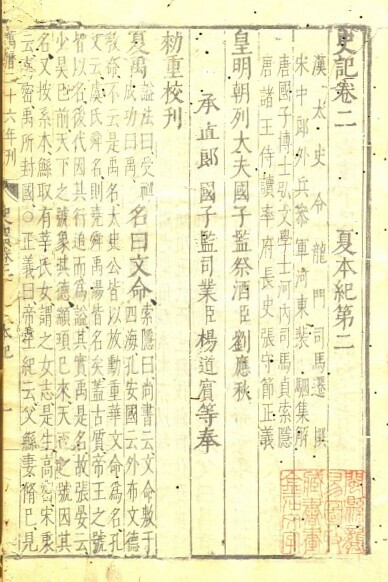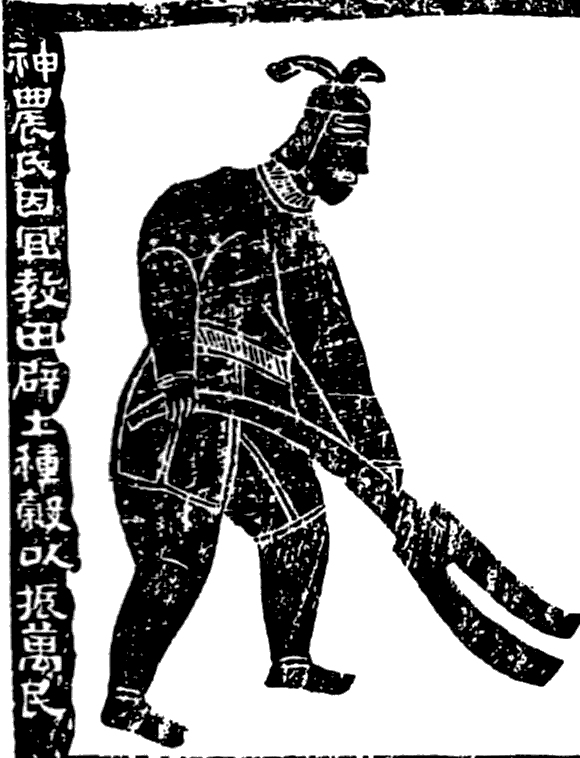|
Jiang River
The Jiang River (, p ''Jiāng Shuǐ'') is the ancient name of a river in China. According to Sima Qian's '' Records of the Grand Historian'', the river gave its name to Shennong's family. According to the '' Guoyu'', it was the birthplace of the Yan emperor. It may be identical to the modern Wei River in Shaanxi Shaanxi is a Provinces of China, province in north Northwestern China. It borders the province-level divisions of Inner Mongolia to the north; Shanxi and Henan to the east; Hubei, Chongqing, and Sichuan to the south; and Gansu and Ningxia to t ....Pulleybank, Edwin G. References Rivers of China Former rivers {{China-river-stub ... [...More Info...] [...Related Items...] OR: [Wikipedia] [Google] [Baidu] |
Pinyin
Hanyu Pinyin, or simply pinyin, officially the Chinese Phonetic Alphabet, is the most common romanization system for Standard Chinese. ''Hanyu'' () literally means 'Han Chinese, Han language'—that is, the Chinese language—while ''pinyin'' literally means 'spelled sounds'. Pinyin is the official romanization system used in China, Singapore, Taiwan, and by the United Nations. Its use has become common when transliterating Standard Chinese mostly regardless of region, though it is less ubiquitous in Taiwan. It is used to teach Standard Chinese, normally written with Chinese characters, to students in mainland China and Singapore. Pinyin is also used by various Chinese input method, input methods on computers and to lexicographic ordering, categorize entries in some Chinese dictionaries. In pinyin, each Chinese syllable is spelled in terms of an optional initial (linguistics), initial and a final (linguistics), final, each of which is represented by one or more letters. Initi ... [...More Info...] [...Related Items...] OR: [Wikipedia] [Google] [Baidu] |
Sima Qian
Sima Qian () was a Chinese historian during the early Han dynasty. He is considered the father of Chinese historiography for the ''Shiji'' (sometimes translated into English as ''Records of the Grand Historian''), a general history of China covering more than two thousand years from the rise of the legendary Yellow Emperor and formation of the first Chinese polity to the reign of Emperor Wu of Han, during which Sima wrote. As the first universal history of the world as it was known to the ancient Chinese, the ''Shiji'' served as a model for official histories for subsequent dynasties across the Sinosphere until the 20th century. Sima Qian's father, Sima Tan, first conceived of the ambitious project of writing a complete history of China, but had completed only some preparatory sketches at the time of his death. After inheriting his father's position as court historian in the imperial court, he was determined to fulfill his father's dying wish of composing and putting together th ... [...More Info...] [...Related Items...] OR: [Wikipedia] [Google] [Baidu] |
Records Of The Grand Historian
The ''Shiji'', also known as ''Records of the Grand Historian'' or ''The Grand Scribe's Records'', is a Chinese historical text that is the first of the Twenty-Four Histories of imperial China. It was written during the late 2nd and early 1st centuries BC by the Han dynasty historian Sima Qian, building upon work begun by his father Sima Tan. The work covers a 2,500-year period from the age of the legendary Yellow Emperor to the reign of Emperor Wu of Han in the author's own time, and describes the world as it was known to the Chinese of the Western Han dynasty. The ''Shiji'' has been called a "foundational text in Chinese civilization". After Confucius and Qin Shi Huang, "Sima Qian was one of the creators of Imperial China, not least because by providing definitive biographies, he virtually created the two earlier figures." The ''Shiji'' set the model for all subsequent dynastic histories of China. In contrast to Western historiographical conventions, the ''Shiji'' does no ... [...More Info...] [...Related Items...] OR: [Wikipedia] [Google] [Baidu] |
Shennong
Shennong ( zh, c=神農, p=Shénnóng), variously translated as "Divine Farmer" or "Divine Husbandman", born , was a mythological Chinese ruler known as the first Yan Emperor who has become a deity in Chinese and Vietnamese folk religion. He is venerated as a culture hero in China and Vietnam. In Vietnamese, he is referred to as . Shennong has at times been counted amongst the Three Sovereigns (also known as "Three Kings" or "Three Patrons"), a group of ancient deities or deified kings of prehistoric China. Shennong has been thought to have taught the ancient Chinese not only their practices of agriculture, but also the use of herbal medicine. Shennong was credited with various inventions: these include the hoe, plow (both style and the plowshare), axe, digging wells, agricultural irrigation, preserving stored seeds by using boiled horse urine (to ward off the borers), trade, commerce, money, the weekly farmers market, the Chinese calendar (especially the division into th ... [...More Info...] [...Related Items...] OR: [Wikipedia] [Google] [Baidu] |
Guoyu (book)
The ''Guoyu'', usually translated as ''Discourses of the States'', is an ancient Chinese text that consists of a collection of speeches attributed to rulers and other men from the Spring and Autumn period (771–476 BC). It comprises a total of 240 speeches, ranging from the reign of King Mu of Zhou () to the execution of the Jin minister Zhibo in 453 BC. Compilation of the ''Guoyu'' probably began during the 5th century and continued until the late 4th century BC. The earliest chapter of the compilation is the ''Discourses of Zhou''. The text's author is unknown, but it is sometimes attributed to Zuo Qiuming, a contemporary of Confucius Confucius (; pinyin: ; ; ), born Kong Qiu (), was a Chinese philosopher of the Spring and Autumn period who is traditionally considered the paragon of Chinese sages. Much of the shared cultural heritage of the Sinosphere originates in the phil ...; although as early as Jin dynasty, Fu Xuan objected to that attrib ... [...More Info...] [...Related Items...] OR: [Wikipedia] [Google] [Baidu] |
Yan Emperor
The Yan Emperor () or the Flame Emperor was a legendary ancient Chinese emperor in pre-dynastic times. Some modern Chinese scholars have identified the Sheep's Head Mountains (''Yángtóu Shān'') Weibin District, Baoji as his homeland and territory. A long debate has existed over whether or not the Yan Emperor was the same person as the legendary Shennong. An academic conference held in China in 2004 achieved general consensus that the Yan Emperor and Shennong were the same person. Another possibility is that the term "Yan Emperor" or "Flame Emperor" was a title, held by dynastic succession of tribal lords, with Shennong being known as ''Yandi'' perhaps posthumously. Accordingly, the term "Yan Emperor''s''" or "Flame Emperor''s''" would be generally more correct. The succession of these Yan or Flame emperors, from Shennong, the first Yan Emperor, until the time of the last Yan Emperor's defeat by the Yellow Emperor, may have been some 500 years. Historical records No wri ... [...More Info...] [...Related Items...] OR: [Wikipedia] [Google] [Baidu] |
Wei River
The Wei River () is a major river in west-central China's Gansu and Shaanxi provinces. It is the largest tributary of the Yellow River and very important in the early development of Chinese civilization. In ancient times, such as in the Records of the Grand Historian, the river was called Wei Shui (). The total length of the Wei River is , covering a drainage area of . Some of the major tributaries include the Luo River, Jing River, Niutou RiverFeng Riverand the Chishui River. In a direct line, it travels due east for before draining into the Yellow River at Tongguan County near the tri-provincial boundary between Shaanxi, Shanxi and Henan provinces, with a series of major cities along its course including Tianshui, Baoji, Xianyang, Xi'an and Weinan. Course The source of the Wei River starts in the mountainous region in southern Weiyuan County (literally meaning "Wei's source"), Gansu province, with the westernmost headwater of its mainstem Qingyuan River (清源 ... [...More Info...] [...Related Items...] OR: [Wikipedia] [Google] [Baidu] |
Shaanxi
Shaanxi is a Provinces of China, province in north Northwestern China. It borders the province-level divisions of Inner Mongolia to the north; Shanxi and Henan to the east; Hubei, Chongqing, and Sichuan to the south; and Gansu and Ningxia to the west. Shaanxi covers an area of over with about 37 million people, the 16th-largest in China. Xi'anwhich includes the sites of the former capitals Fenghao and Chang'anis the provincial capital and largest city in Northwest China and also one of the oldest cities in China and the oldest of the Historical capitals of China, Four Ancient Capitals, being the capital for the Western Zhou, Western Han, Sima Jin, Jin, Sui dynasty, Sui and Tang dynasty, Tang List of Chinese dynasties, dynasties. Xianyang, which served as the capital of the Qin dynasty (221–206 BC), is just north across the Wei River. The other Prefectures of China, prefecture-level prefecture-level city, cities into which the province is divided are Ankang, Baoji, Hanzho ... [...More Info...] [...Related Items...] OR: [Wikipedia] [Google] [Baidu] |
Rivers Of China
Rivers that flow through China are as follows. The list is organized according to the body of water into which each river empties, beginning with the Sea of Okhotsk in the northeast, moving clockwise on a map and ending with the Arctic Ocean. Sea of Okhotsk * Heilong River (黑龙江) (Amur River) **Ussuri River (乌苏里江) ***Muling River (穆棱河) *** Songacha River (松阿察河) ** Songhua River (松花江) ***Ashi River (阿什河) *** Hulan River (呼兰河) *** Second Songhua River (第二松花江) *** Woken River (倭肯河) *** Mudan River (牡丹江) *** Nen River (嫩江) **** Gan River (Inner Mongolia) (甘河) *** Huifa River (辉发河) ** Argun (额尔古纳河) *** Hailar River (海拉尔河) *** Hulun Lake (呼伦湖) **** Kherlen River (克鲁伦河) **** Buir Lake (贝尔湖) (mostly in Mongolia) Sea of Japan * Suifen River (绥芬河) / Razdolnaya River (Russia) * Tumen River (图们江) ** Hunchun River (珲春河) Bohai Sea * Anzi River ... [...More Info...] [...Related Items...] OR: [Wikipedia] [Google] [Baidu] |







